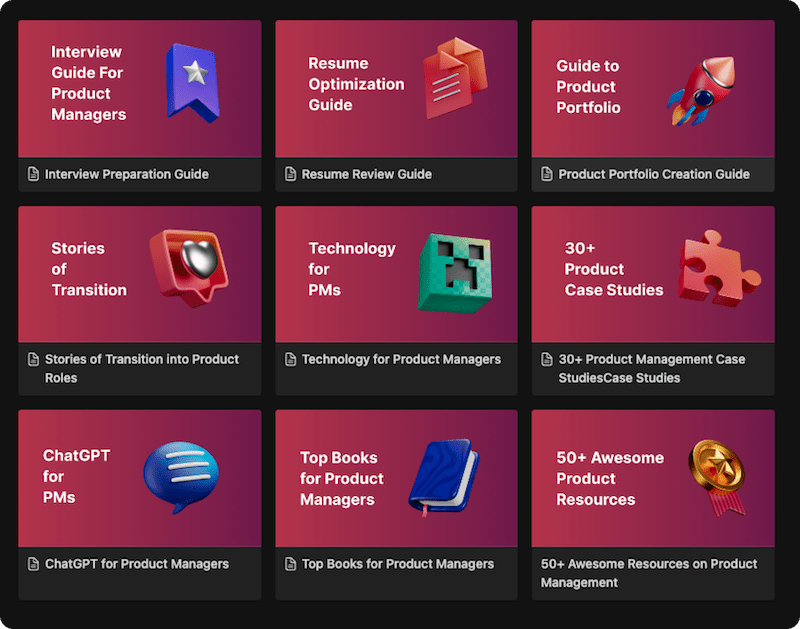Have you ever presented a detailed project update in a meeting, only to be met with blank stares or, worse, questions that show a key person has no idea what your project is about? Or perhaps you’ve had a crucial stakeholder remark, “This is the first I’m hearing of this,” just a week before a major Product Launch. These moments aren’t just awkward; they are symptoms of a breakdown in the single most critical, non-technical skill a product manager must possess: effective stakeholder communication. This isn’t just about sending emails or scheduling meetings; it’s the lifeblood of any successful project.
Effective Stakeholder Communication is the core process that enables everything from securing buy-in to navigating risks and achieving true Stakeholder Alignment. Without a deliberate strategy for who you talk to, what you say, and how you say it, you are steering your project through a storm blindfolded. This guide is designed to be your compass. We will break down the what, why, and how of this essential discipline, providing you with a step-by-step framework and practical tools to move from haphazard updates to a structured communication strategy that keeps everyone informed, engaged, and working towards the same goal.
Definition and Origin
The formal practice of stakeholder communication originates from the field of project management, where it is recognized as a core knowledge area by institutions like the Project Management Institute (PMI). The PMBOK® Guide (Project Management Body of Knowledge) dedicates an entire chapter to “Project Communications Management.” The core idea is that communication is not an afterthought but a planned and managed activity essential for project success. In the agile and product management worlds, these principles have been adapted to be more continuous and iterative, but the fundamental goal remains the same: to foster a shared understanding across all parties involved.
Benefits: Why a Communication Plan Isn’t Just “Busy Work”
Investing time in a solid communication strategy yields enormous returns. It’s the difference between constantly fighting fires and smoothly navigating your project’s course.
- Builds Trust and Manages Expectations: Consistent and transparent communication builds trust, even when you have to deliver bad news. It ensures there are no surprises.
- Proactively Mitigates Risks: A good communication plan ensures that risks and issues are surfaced early, allowing the team to address them before they escalate.
- Increases Engagement and Buy-in: When stakeholders feel informed and heard, they are more likely to be engaged and act as champions for your project.
- Facilitates Faster, Better Decision-Making: Providing stakeholders with the right information at the right time empowers them to make informed decisions quickly, preventing bottlenecks.
- Drives Stakeholder Alignment: This is the ultimate benefit. Strategic communication is the primary vehicle you use to achieve and maintain Stakeholder Alignment around your Product Strategy and roadmap.
How to Create Your Stakeholder Communication Plan: A 6-Step Guide
Effective communication is not accidental; it is designed. A Stakeholder Communication Plan is a living document that outlines your strategy. Here’s how to build one.
Step 1: Identify and Analyze Your Stakeholders
Before you can communicate, you must know your audience. Start by identifying all your stakeholders and then analyze their level of interest and influence using a Power/Interest Grid. This analysis, central to Stakeholder Management, tells you who needs a detailed weekly report and who just needs a high-level monthly summary.
Step 2: Define Your Communication Goals for Each Group
What do you want to achieve with your communication? Your goal isn’t just to “provide an update.” Be more specific.
- For your Executive Sponsor: The goal might be to maintain their confidence and secure ongoing support.
- For your Engineering Team: The goal is to provide clarity on priorities and remove blockers.
- For the Sales Team: The goal is to equip them with information for upcoming feature releases.
Step 3: Choose the Right Channel and Format
The medium is the message. A critical project risk should not be buried in a long email newsletter. Match the channel to the audience and the message.
| Channel | Best For | Example |
| Formal updates, documentation, broad announcements | Weekly project status report | |
| Slack/Teams | Quick questions, informal updates, daily check-ins | “FYI, the staging server is down for maintenance.” |
| Formal Meetings | Major decisions, kickoffs, workshops, problem-solving | Sprint Planning or a Go-To-Market strategy session |
| Dashboards | Real-time data, KPI (Key Performance Indicator) tracking | A BI Business Intelligence dashboard showing User Engagement Metrics |
| Roadmap Software | High-level strategy, timelines, priorities | Sharing the quarterly Product Roadmap |
Step 4: Determine the Right Frequency
How often does each stakeholder group need to hear from you?
- Executives: May prefer a bi-weekly or monthly high-level summary.
- Your core project team: Needs daily communication.
- Adjacent departments (e.g., sales, marketing): A weekly or bi-weekly update might be perfect.
Step 5: Create a Communication Matrix
This is the heart of your plan. A communication matrix is a simple table that brings all the previous steps together in one actionable view.
| Stakeholder | Goal | Key Information/Message | Channel | Frequency | Owner |
| Executive Sponsor | Maintain confidence | Project health, budget, major risks | Email & Monthly Meeting | Monthly | Product Manager |
| Engineering Team | Clarity on priorities | User stories, backlog priorities, feedback | Daily Standup, Jira | Daily | Product Owner |
| Sales Leadership | Equip for launch | Feature benefits, timelines, target persona | Email & Demo | Bi-weekly | Product Manager |
| Customer Support | Prepare for inquiries | Known issues, release notes, feature how-tos | Confluence, Slack | Weekly | Product Manager |
Step 6: Execute, Get Feedback, and Adapt
Your communication plan is not static. Execute it consistently, but also check in with your stakeholders. Ask them, “Are these updates useful? Is the frequency right? Is there anything else you need to know?” Use this feedback to refine your plan.
Mistakes to Avoid: Common Communication Pitfalls
- The One-Size-Fits-All Update: Sending the exact same detailed email to your CEO and your lead developer is inefficient and ineffective. Tailor your message.
- Using Technical Jargon: When speaking to non-technical stakeholders (e.g., sales, marketing), avoid technical jargon. Translate features into customer benefits.
- Forgetting Communication is Two-Way: Don’t just broadcast information. Create channels for feedback and actively listen. Communication is about dialogue, not a monologue.
- Assuming No News is Good News: Silence from a stakeholder doesn’t mean they are happy or aligned. Proactively check in to confirm understanding and support.
- Hiding Bad News: Never hide delays or problems. Communicate bad news early, transparently, and with a plan of action. This builds trust far more than trying to maintain a facade of perfection.
Real-World Example: Communicating a Project Delay
Imagine a product manager discovers that a key feature for a new SaaS Product Management offering will be delayed by two weeks due to an unexpected issue with a third-party API (Application Programming Interfaces). Here’s how she uses a tailored communication approach:
- To the Engineering Team (Immediate, in-person/video call): She communicates the problem transparently, focusing on collaborative problem-solving. The goal is to work together on a new Release Plan.
- To the Head of Sales (Same day, phone call): She calls him directly to give him a heads-up, knowing his team has started conversations with clients. She focuses on the impact and provides a revised timeline and talking points for his team.
- To the Executive Sponsor (Same day, concise email): She sends a brief email outlining the issue, the impact on the timeline, and the mitigation plan. She offers to connect for a more detailed discussion if needed, respecting the executive’s time.
- To the Marketing Team (Next day, in the regular weekly sync): She updates the marketing lead, focusing on how this impacts the Go-To-Market (GTM) calendar and works with them to adjust campaign dates.
In each case, the core message is the same (a two-week delay), but the delivery, detail, and focus are tailored to the audience.
Related Concepts: Communication vs. Management vs. Alignment
These terms are related but distinct. Understanding the difference is key to mastering stakeholder relations.
| Concept | Focus | What it is | Analogy |
| Stakeholder Communication | The “How” | The tactical process of exchanging information. | The phone lines and the language you use. |
| Stakeholder Management | The “What” | The broader strategy of engaging stakeholders to meet their needs. | The switchboard operator directing calls and managing connections. |
| Stakeholder Alignment | The “Why” | The desired outcome where everyone shares a unified vision and goal. | Everyone having the same, productive conversation on those phone lines. |
You use Communication as a tool to perform Management in order to achieve the goal of Alignment.
Conclusion
In the complex world of product management, it’s tempting to focus solely on the tangible: the backlog, the roadmap, the user stories. But the intangible element of communication is what holds everything together. It is the framework upon which successful products are built, turning a diverse group of individuals with different motivations and perspectives into a cohesive, high-performing team. Thinking of communication as a strategic function, rather than an administrative chore, is a fundamental shift that separates good product managers from great ones.
By moving from reactive updates to a proactive, documented communication plan, you are not adding bureaucracy; you are eliminating ambiguity and building a foundation of trust. The clarity it brings empowers your team, satisfies your executives, and ultimately leads to better products that truly meet user needs. Start today by mapping your stakeholders and thinking critically about your next message. This deliberate practice will become your most powerful tool for navigating challenges and leading your team to success.
FAQ’s
The most important part is the analysis behind it. A plan is only effective if it’s based on a true understanding of who your stakeholders are and what they care about. The “Audience” and “Goal” columns in your matrix drive everything else.
Be prompt, be direct, and be honest. Deliver the news yourself. Explain the situation clearly without blaming anyone. Most importantly, come prepared with a plan of action to mitigate the issue. This shows leadership and builds trust.
Communication can be one-way (e.g., sending a status report). Engagement is always two-way. Engagement is the result of good communication; it’s when stakeholders are actively involved, providing feedback, and participating in the process. Your goal should be to use communication to foster engagement.
Your communication plan can be built in simple tools like Confluence, Google Sheets, or Notion. For execution, leverage tools like Slack for informal comms, Jira for development progress, Loom for quick video demos, and email for formal updates. The tool is less important than the strategy.
Learn better with active recall quiz
How well do you know What is Stakeholder Communication? Let’s find out with this quick quiz! (just 10 questions)


